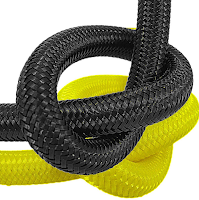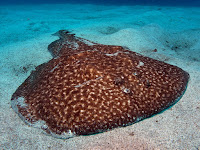I have being discussing many times with colleagues, friends and students whether it is better to demonstrate and learn OW skills in a neutrally buoyant position or on the knees, and I can already anticipate you that without any doubt I opt for the first solution. Here is why.
First of all, let me clarify that for me neutral buoyancy does not necessarily mean being “perfectly” neutrally buoyant from the first second we hit the water, but just horizontal position. The first skills can be comfortably achieved in slightly negative buoyant position, with the tip of the fins and belly or hands touching the bottom. Progressively, by practicing buoyancy skills as oral inflation and fin pivot, the student will improve his horizontal neutral position in the water.
 |
📸 La Palma Diving
|
The above described slightly negative position offers the advantage for the student of practicing skills in a more realistic dive position, but still keeping the pool bottom as a reference in case of lost of balance. In fact, when practicing skills in a resort pool there is normally no problem in keeping the position on the knees; on the contrary, if we must teach skills in a wavy confined open water session for the students it will be easier to keep the balance in an horizontal position with the tip of the fins touching the bottom. The students in fact will have the possibility of helping themselves with the hands, e.g. by holding a big rock, and they will not be pushed away by the waves as it could happen in a knee position as a consequence of the bigger body area exposed to the waves. In consideration of the above, I do not see any problem in connection with students ratio as the group will be more compact and stable.
Moreover, being used to horizontal position, in open water environment the student will be already used to a correct horizontal trim and will not tend to put himself in a vertical position in order to perform skills. This normally works also in relation with simple DSD dives.
Furthermore, speaking about a realistic training scenario with very short time available due to holiday schedule, learning in an horizontal position is not more difficult that learning on the knees, it is just a matter of initial set up.
Of course much of this depends by how the instructor himself was trained to perform skills during his IDC: many instructors that learned to perform skills on their knees will find inconvenient to demonstrate in neutrally buoyant position, just because they never trained how to do it properly. In fact, the demonstration of some skills (think about BCD or weights system removal and replacement) changes drastically if you chose knee or an horizontal position.
For this reason, in my personal case, I decided to opt for an IDC where I could learn how to demonstrate skills in a neutrally buoyant position: switching from neutral buoyancy to kneeling position is easy, but the opposite can be tricky and needs some training.
Some last considerations:
- as the training standards of major agencies do not impose any position, the instructor must be clever enough to "read" his students and to choose the position that better adapts to his students’ water skills, in order them to complete the course having fun and without stress;
- the surrounding underwater environment and the sea bottom structure also influence the demo position: if teaching in a place full of corals where you only have available a patch of sand 3m x 3m, it will be difficult for both instructor and student to lay on their belly so the only solution, at least in the beginning, would be to perform skills in kneeing position. This is valid in particular in the case of DSD in tropical destinations where no pool is available;
- if the instructor opts for a position, he shall perform all the skills in that position. In other words, if you go for neutral buoyancy, you shall teach all the skills in neutral buoyancy and not some in one position and some in the other, otherwise this could be potentially misleading for the student.
And you? How did you learn basic skills during your Open Water Course?
If you are an instructor, how do you teach skills to your students?





















